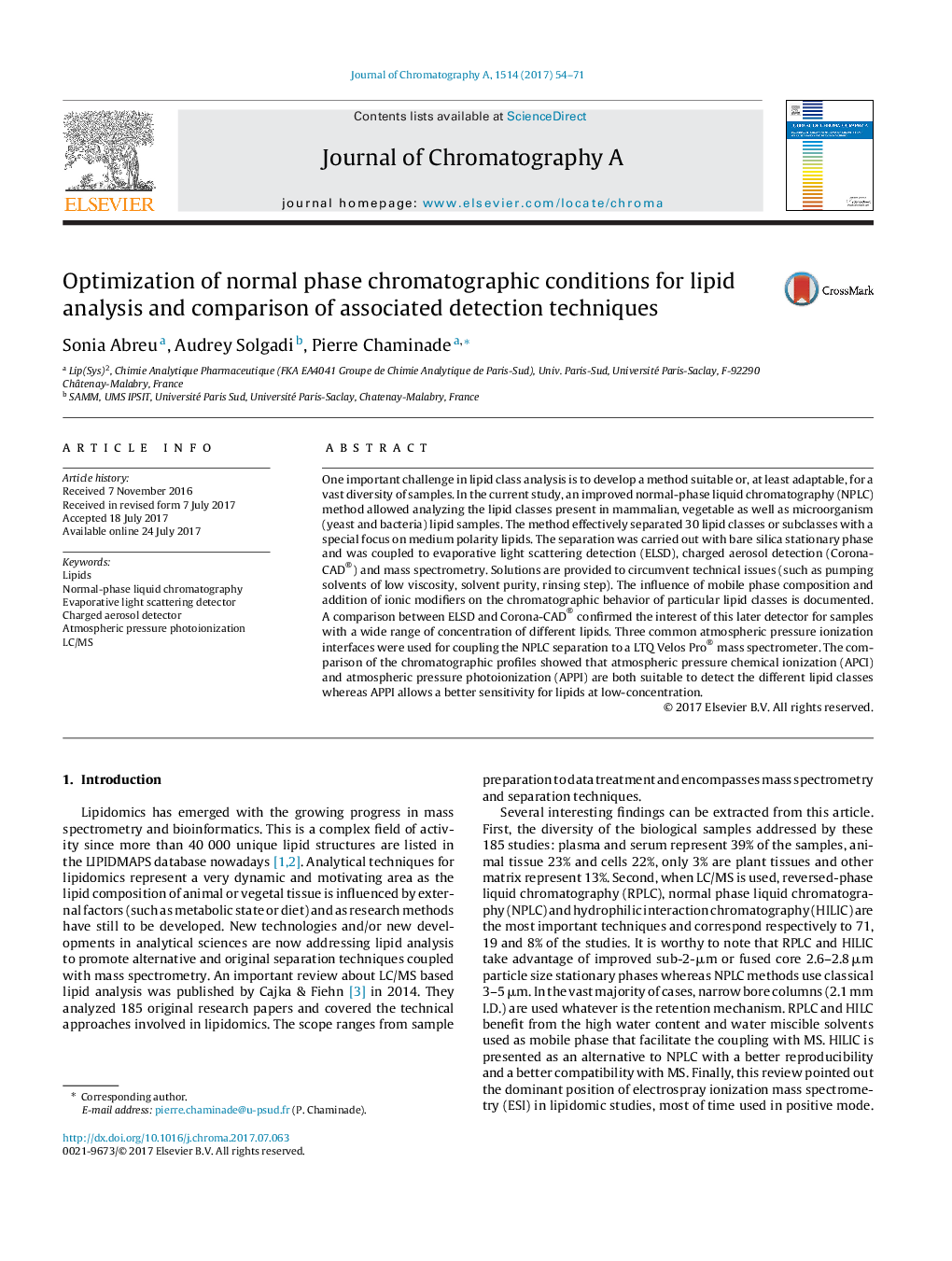| Article ID | Journal | Published Year | Pages | File Type |
|---|---|---|---|---|
| 5135128 | Journal of Chromatography A | 2017 | 18 Pages |
â¢A generic NP-HPLC method for lipid classes analysis is presented.â¢The total lipid composition of a wide variety of samples can be assessed.â¢The effect of mobile phase components on lipid classes retention is illustrated.â¢Hyphenation to mass spectrometry with three AP interfaces is demonstrated.
One important challenge in lipid class analysis is to develop a method suitable or, at least adaptable, for a vast diversity of samples. In the current study, an improved normal-phase liquid chromatography (NPLC) method allowed analyzing the lipid classes present in mammalian, vegetable as well as microorganism (yeast and bacteria) lipid samples. The method effectively separated 30 lipid classes or subclasses with a special focus on medium polarity lipids. The separation was carried out with bare silica stationary phase and was coupled to evaporative light scattering detection (ELSD), charged aerosol detection (Corona-CAD®) and mass spectrometry. Solutions are provided to circumvent technical issues (such as pumping solvents of low viscosity, solvent purity, rinsing step). The influence of mobile phase composition and addition of ionic modifiers on the chromatographic behavior of particular lipid classes is documented. A comparison between ELSD and Corona-CAD® confirmed the interest of this later detector for samples with a wide range of concentration of different lipids. Three common atmospheric pressure ionization interfaces were used for coupling the NPLC separation to a LTQ Velos Pro® mass spectrometer. The comparison of the chromatographic profiles showed that atmospheric pressure chemical ionization (APCI) and atmospheric pressure photoionization (APPI) are both suitable to detect the different lipid classes whereas APPI allows a better sensitivity for lipids at low-concentration.
